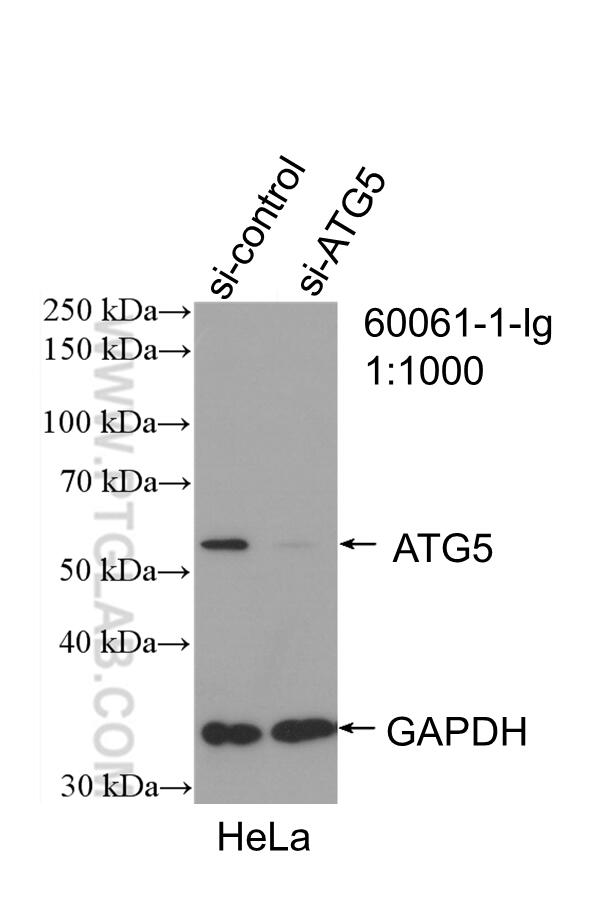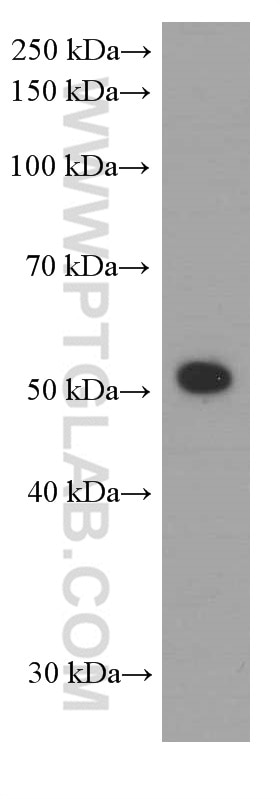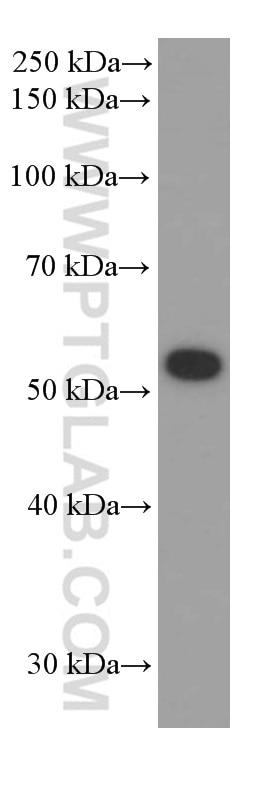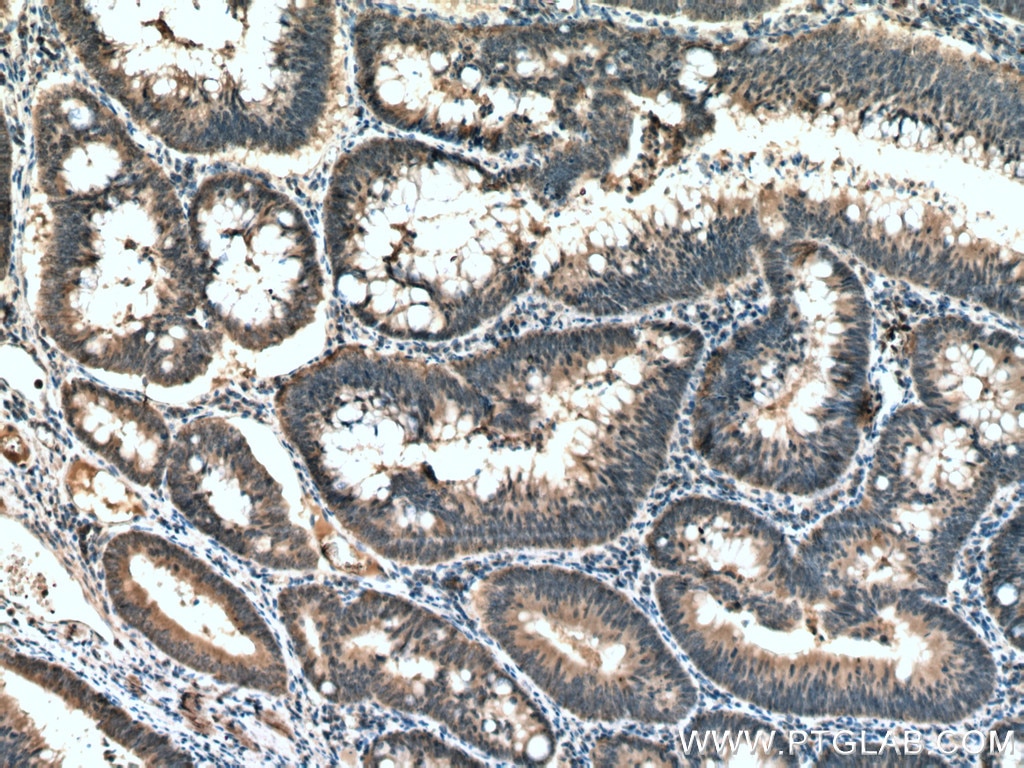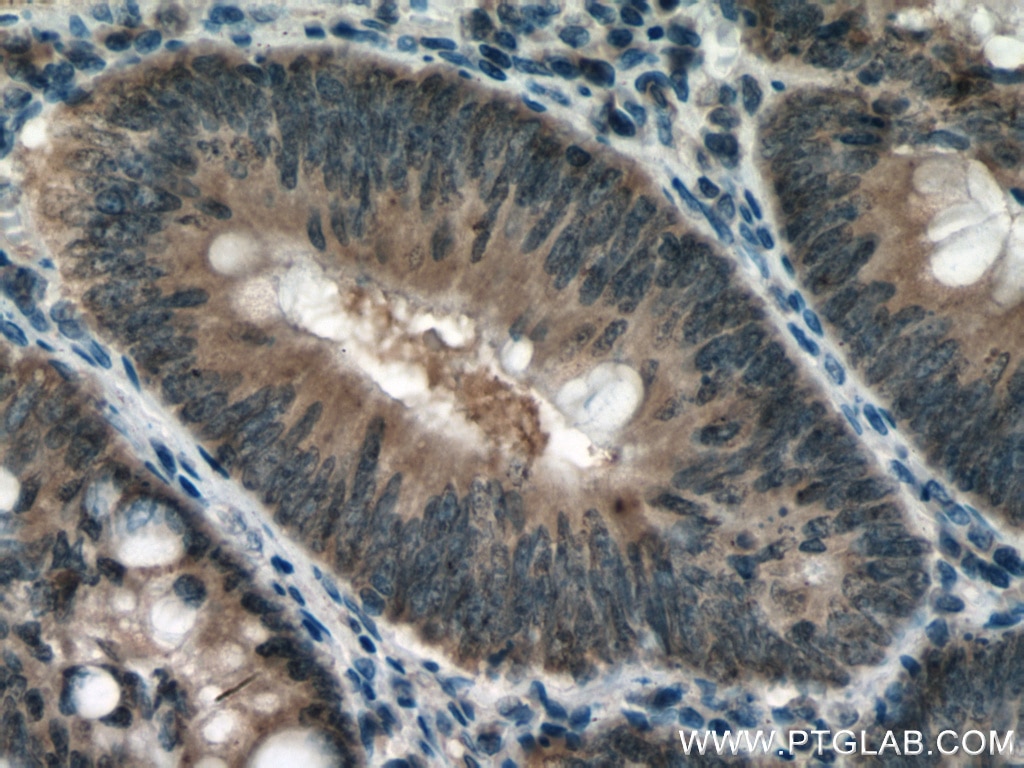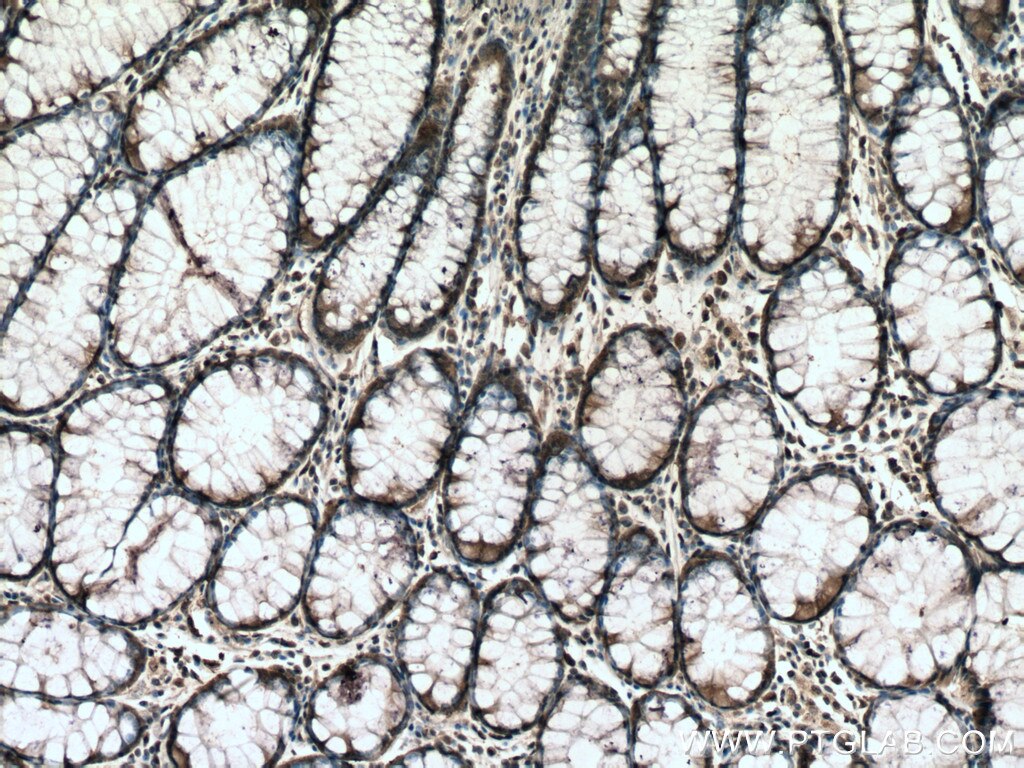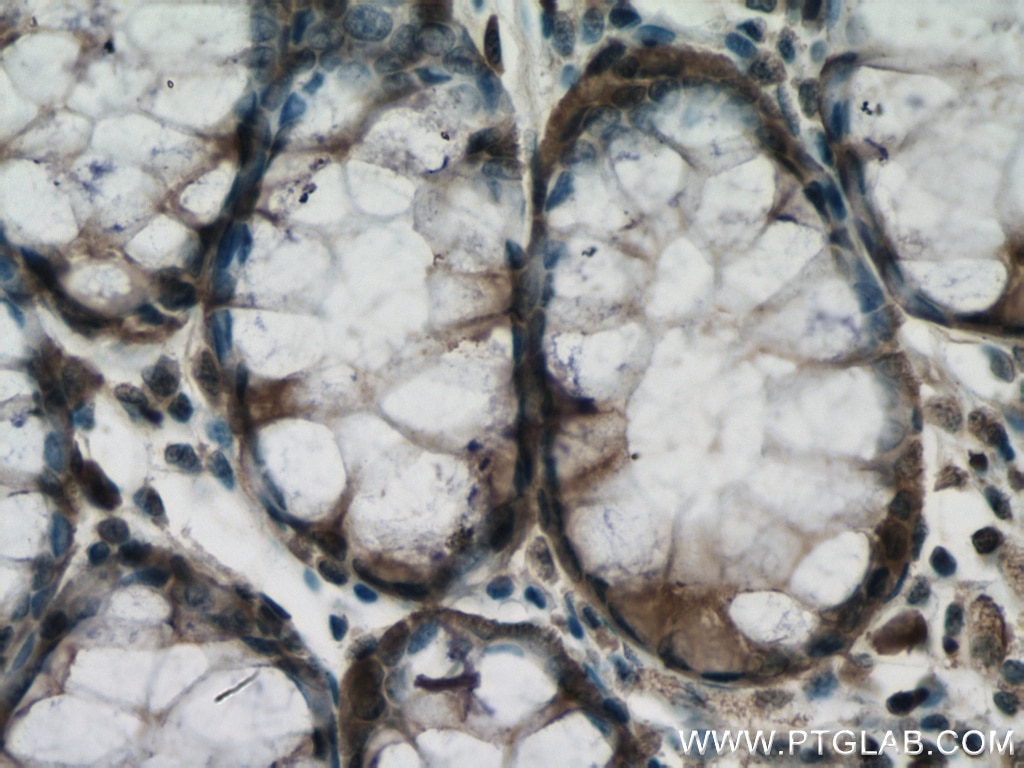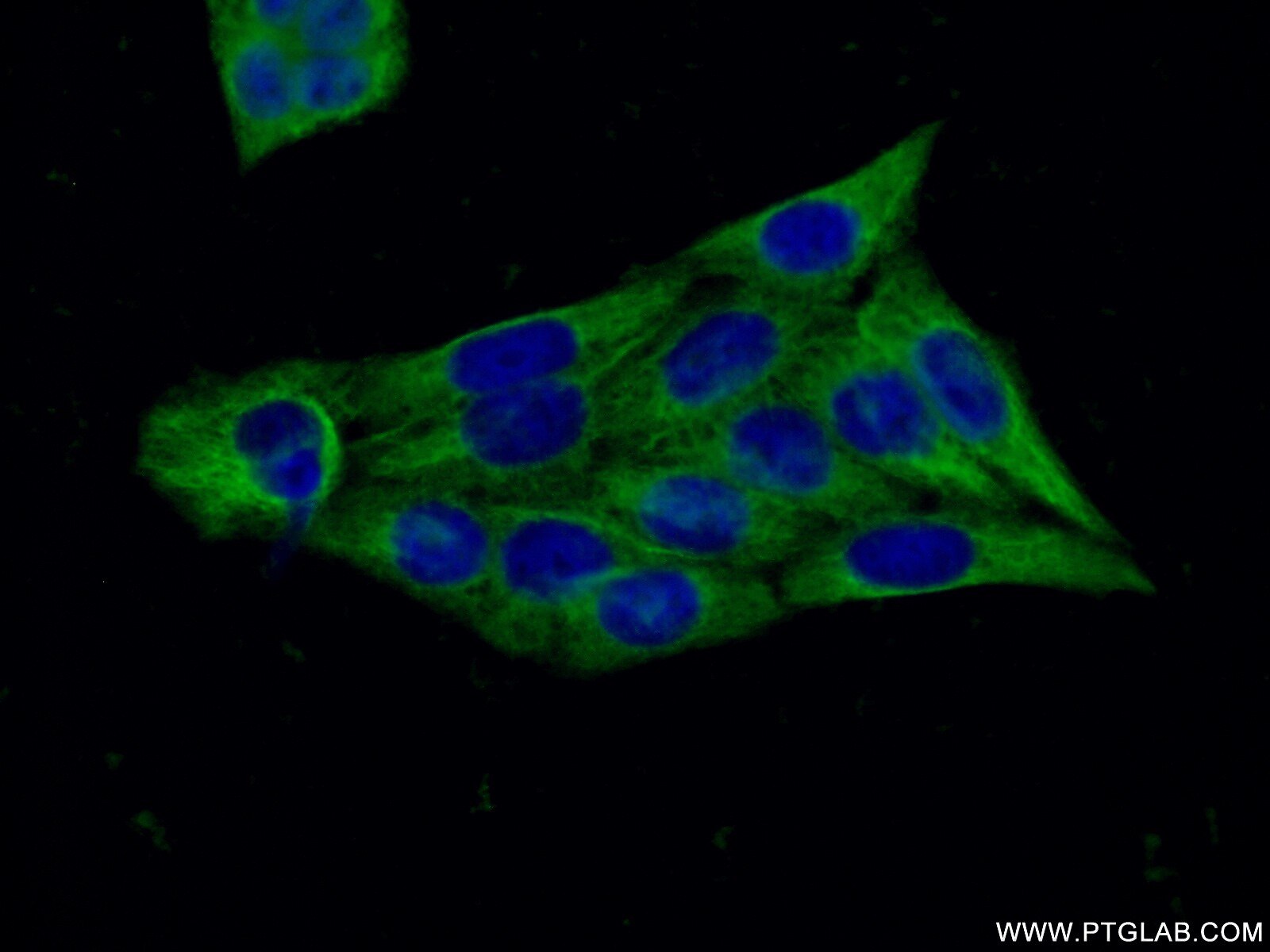- Phare
- Validé par KD/KO
Anticorps Monoclonal anti-ATG5
ATG5 Monoclonal Antibody for WB, IF, IHC, ELISA
Hôte / Isotype
Mouse / IgM
Réactivité testée
Humain, souris
Applications
WB, IF, IHC, ELISA
Conjugaison
Non conjugué
CloneNo.
3G6E6
N° de cat : 60061-1-Ig
Synonymes
Galerie de données de validation
Applications testées
| Résultats positifs en WB | cellules K-562, cellules HeLa |
| Résultats positifs en IHC | tissu de cancer du côlon humain, il est suggéré de démasquer l'antigène avec un tampon de TE buffer pH 9.0; (*) À défaut, 'le démasquage de l'antigène peut être 'effectué avec un tampon citrate pH 6,0. |
| Résultats positifs en IF/ICC | cellules HeLa, |
Dilution recommandée
| Application | Dilution |
|---|---|
| Western Blot (WB) | WB : 1:500-1:2000 |
| Immunohistochimie (IHC) | IHC : 1:50-1:500 |
| Immunofluorescence (IF)/ICC | IF/ICC : 1:50-1:500 |
| It is recommended that this reagent should be titrated in each testing system to obtain optimal results. | |
| Sample-dependent, check data in validation data gallery | |
Applications publiées
| KD/KO | See 1 publications below |
| WB | See 5 publications below |
| IHC | See 1 publications below |
| IF | See 1 publications below |
Informations sur le produit
60061-1-Ig cible ATG5 dans les applications de WB, IF, IHC, ELISA et montre une réactivité avec des échantillons Humain, souris
| Réactivité | Humain, souris |
| Réactivité citée | Humain, souris |
| Hôte / Isotype | Mouse / IgM |
| Clonalité | Monoclonal |
| Type | Anticorps |
| Immunogène | ATG5 Protéine recombinante Ag0214 |
| Nom complet | ATG5 autophagy related 5 homolog (S. cerevisiae) |
| Masse moléculaire calculée | 32 kDa |
| Poids moléculaire observé | 55 kDa |
| Numéro d’acquisition GenBank | BC002699 |
| Symbole du gène | ATG5 |
| Identification du gène (NCBI) | 9474 |
| Conjugaison | Non conjugué |
| Forme | Liquide |
| Méthode de purification | Chromatographie d'affinité thiophilique |
| Tampon de stockage | PBS with 0.02% sodium azide and 50% glycerol |
| Conditions de stockage | Stocker à -20°C. Stable pendant un an après l'expédition. L'aliquotage n'est pas nécessaire pour le stockage à -20oC Les 20ul contiennent 0,1% de BSA. |
Informations générales
ATG5, also named as APG5L and ASP, belongs to the ATG5 family. It is required for autophagy. It plays an important role in the apoptotic process, possibly within the modified cytoskeleton. Its expression is a relatively late event in the apoptotic process, occurring downstream of caspase activity. Autophagy is a catabolic process for the autophagosomic-lysosomal degradation of bulk cytoplasmic contents. Formation of the autophagosome involves a ubiquitin-like conjugation system in which Atg12 is covalently bound to Atg5 and targeted to autophagosome vesicles. It mediates autophagosome-independent host protection.
Protocole
| Product Specific Protocols | |
|---|---|
| WB protocol for ATG5 antibody 60061-1-Ig | Download protocol |
| IHC protocol for ATG5 antibody 60061-1-Ig | Download protocol |
| IF protocol for ATG5 antibody 60061-1-Ig | Download protocol |
| Standard Protocols | |
|---|---|
| Click here to view our Standard Protocols |
Publications
| Species | Application | Title |
|---|---|---|
Autophagy Autophagy core protein ATG5 is required for elongating spermatid development, sperm individualization and normal fertility in male mice. | ||
Autophagy The ciliary protein RPGRIP1L governs autophagy independently of its proteasome-regulating function at the ciliary base in mouse embryonic fibroblasts. | ||
Cancer Cell Int PCK1 activates oncogenic autophagy via down-regulation Serine phosphorylation of UBAP2L and antagonizes colorectal cancer growth | ||
Cell Biosci A missing piece of the puzzle in pulmonary fibrosis: anoikis resistance promotes fibroblast activation. | ||
Mol Med Rep Autophagy is essential for flavopiridol‑induced cytotoxicity against MCF‑7 breast cancer cells.
| ||
Cells Dev Enhanced autophagy suppresses inflammation-mediated bone loss through ROCK1 signaling in bone marrow mesenchymal stem cells. |
